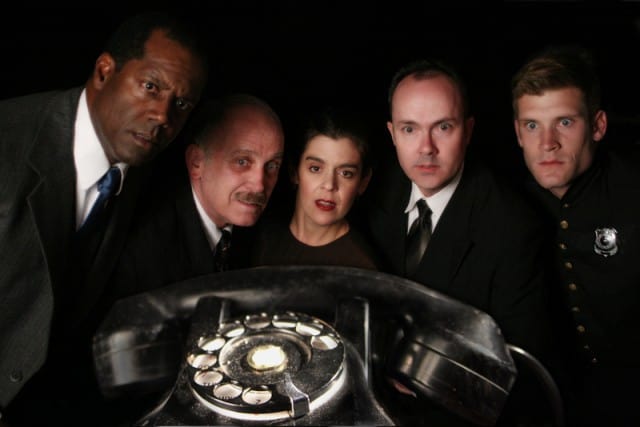



In true Hitchcockian fashion, the phone used for the sequence is not quite what it appears to be. The fitting backdrop for the opening is the dial of an old-fashioned rotary telephone, a large blood red “M” replacing the number six. The director’s films nearly always featured distinctive title cards and mood-setting credits, and Dial M for Murder was no exception. Here, a slanting serif typeface paints a picture of a marriage gone wrong, the jagged edges evoking the blade of a well-worn knife. Hitch – who began his film career as a title designer – always recognized the value of strong, thematically appropriate typographic choices and opening sequences that set the scene. The title card of Hitchcock's 1935 film The 39 Steps But though the director’s pre- Vertigo opening sequences may have lacked the sophistication of Bass’ early output, they were always finely considered pieces that were integral to the film as a whole. When people think of Hitchcock’s title sequences, they rightfully recall his celebrated collaborations with title designer Saul Bass. It was also the first Hitch film to feature Kelly in a lead role.

The crime thriller is notable for being Hitchcock’s first and only stereoscopic 3D film (although it played mostly in traditional 2D during its theatrical run), as well as his first widescreen picture.
Dial m for murder movie cast pro#
The surprise success of 1953’s House of Wax prompted studio Warner Bros., who had Hitchcock under contract at the time, to push a number of 3D movies into production, one of which was Dial M for Murder.īased on Frederick Knott’s stage play of the same name, Dial M for Murder follows an ex-tennis pro (Ray Milland) who conspires to have his wife (Grace Kelly) murdered after discovering she is having an affair. But a combination of poor timing and a gimmicky new trend sweeping Hollywood – the 3D movie – conspired against the filmmaker. Fresh off the successes of Strangers on a Train (1951) and I Confess (1953), director Alfred Hitchcock was poised to begin production on his voyeuristic thriller Rear Window.


 0 kommentar(er)
0 kommentar(er)
